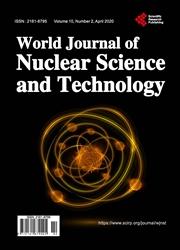Determination of Uranium Traces in Nuclear Reactor IEA-R1 Pool Water
引用次数: 3
Abstract
IEA-R1 nuclear reactor operation has the routine to control uranium content in pool water to be in trace range below 50 μg/L. There are several routes to determine the uranium trace content in water in the literature; voltammetry has been systematically employed. In the present study, the chosen chemical determination of uranium traces used the voltammetric method known as AdCSV (adsorptive cathodic stripping voltammetry). This technique, based on mercury voltammetry, is an adequate methodology to determine uranium traces. The chloranilic acid [CAA] (2,5-dichloro-3,6-dihydroxy-1,4-benzo-quinone) is indicated as chelating agent. The redox reaction of UO2+2 with CAA is sensitive in the range of 2 2(CAA)2] reduction potential. In this work, we present the uranium trace results for IEA-R1 reactor water, sampled after an operation routine shutdown. The uranium trace determination for IEA-R1 pool water showed content around 1 μg/L [U] with statistical significance. Therefore the IEA-R1-reactor-water purification showed to be adequate and safe.核反应堆iaea - r1池水中痕量铀的测定
IEA-R1核反应堆的常规操作是将池水中的铀含量控制在50μg/L以下。文献中有几种测定水中痕量铀含量的方法;伏安法已被系统地应用。在本研究中,所选择的痕量铀的化学测定使用了被称为AdCSV(吸附阴极溶出伏安法)的伏安法。这种基于汞伏安法的技术是测定痕量铀的适当方法。氯苯胺酸[CAA](2,5-二氯-3,6-二羟基-1,4-苯醌)被认为是螯合剂。UO2+2与CAA的氧化还原反应在2 2(CAA)2]还原电位范围内是敏感的。在这项工作中,我们介绍了IEA-R1反应堆水的铀示踪结果,这些结果是在操作常规停堆后采样的。IEA-R1池水的铀痕量测定显示含量约为1μg/L[U],具有统计学意义。因此,IEA-R1-反应物-水的纯化被证明是充分和安全的。
本文章由计算机程序翻译,如有差异,请以英文原文为准。
求助全文
约1分钟内获得全文
求助全文

 求助内容:
求助内容: 应助结果提醒方式:
应助结果提醒方式:


